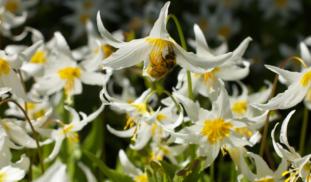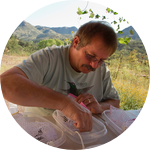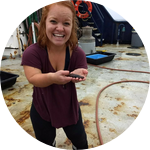Plants, pollinators, and phenological mismatch

Why do wildflowers bloom? Flowers attract pollinators, which allow plants to complete their life cycle. The Avalanche lily above, for example, may be pollinated by the Syrphid fly attracted to its flower, allowing it to produce seeds later in the summer. That Syrphid fly will in turn forage on pollen or nectar produced by the Avalanche lily. Plant-pollinator interactions are thus critical for both the Avalanche lily and the Syrphid fly. Importantly, plant-pollinator interactions can only play out if both parties are present in the same window of time, which makes this species interaction potentially vulnerable to climate change. For example, if future climate change shifts the flowering time of Avalanche lily earlier (as data collected by our volunteers suggests it will), the Syrphid fly will similarly have to emerge earlier to be able to forage on this species for nectar or pollen. When interacting species shift their phenology at different rates with climate change, something ecologists call phenological mismatch can occur (see this recent New York Times article for examples of some plants and animals experiencing phenological mismatch). Because the wildflower species we monitor through MeadoWatch are generally visited by many pollinator species who also visit many plant species, we don’t expect phenological mismatch to be as much of a problem as it would be if these plant-pollinator interactions were highly specialized (i.e. each plant species is pollinated by just one pollinator). However, species like the Avalanche lily (pictured above), which is one of the first species to flower after snowmelt, could be sensitive to phenological mismatch in a future warmer world if it ends up flowering before any pollinators are available. Understanding how climate drives wildflower phenology is one way we can better understand whether phenological mismatch with pollinators might be a problem for wildflower species like the Avalanche lily. Please help us do so by visiting our project page and supporting our citizen science program MeadoWatch!








0 comments